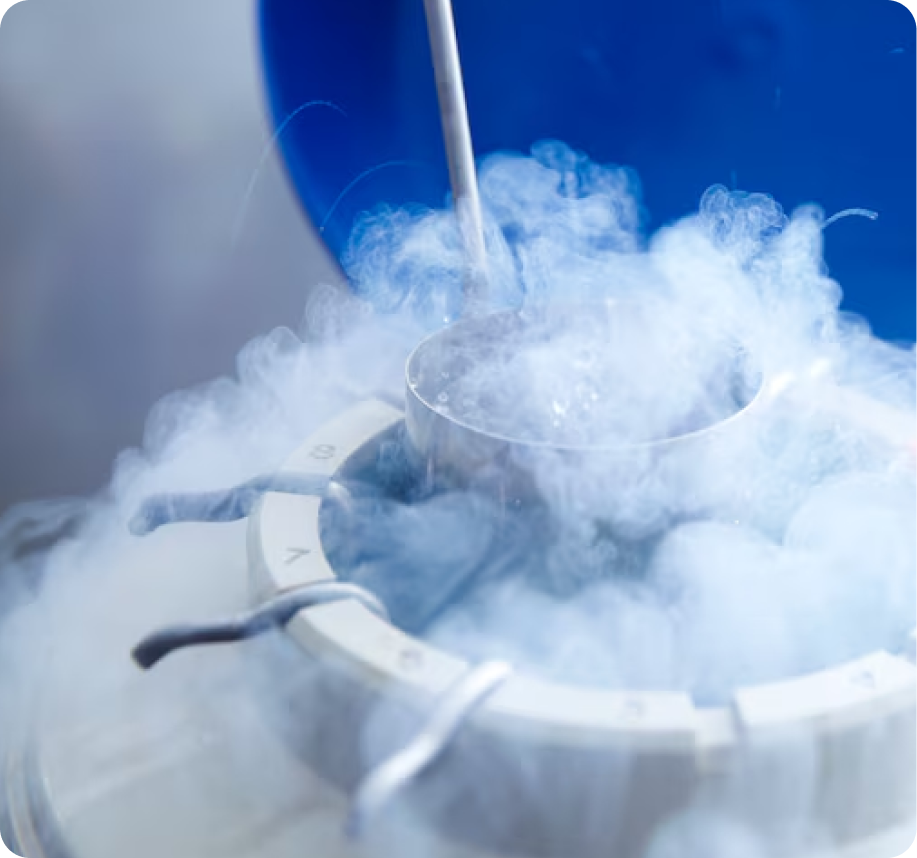In vitro fertilisation (IVF) stands as a beacon of hope for countless individuals and couples facing the challenge of infertility. As a cornerstone of assisted reproductive technology, IVF has evolved significantly since its inception, with continuous breakthroughs propelling its success rates and offering more reliable outcomes for patients. Advances in reproductive medicine have not only enhanced the efficiency of IVF procedures but also improved the understanding and management of its associated risks.
Reproductive medicine specialists are now equipped with cutting-edge technologies enabling them to optimise every stage of the IVF process. These advancements include refined protocols for ovarian stimulation, improved methods for embryo culture and selection, and non-invasive techniques to assess embryo viability. Moreover, professionals in this field are continually addressing the socio-economic factors that influence access to fertility treatments, ensuring broader availability of services.
The integration of innovation in IVF has also been driven by the expertise and dedication of pioneers who are committed to solving complex fertility problems. Their contributions to the field are vital in addressing commonly asked questions and misconceptions around IVF, thus fostering a well-informed public. The inclusive role of these professionals underlines a collaborative effort to improve both the science and the patient experience of IVF.
Key Takeaways
- Continuous innovation in IVF technology enhances success rates and patient outcomes.
- Managing IVF risks and broadening treatment accessibility remain crucial focus areas.
- Experts are critical in evolving IVF practices and educating on fertility issues.
Advancements in IVF Technology
Recent technological breakthroughs have significantly enhanced the precision and efficacy of in vitro fertilisation (IVF) processes.
Improving Embryo Selection with AI
Artificial intelligence (AI) has revolutionised embryo assessment and selection in IVF. Scientists have developed algorithms that analyse microscopic images of embryos to predict their viability with greater accuracy. These AI systems can identify patterns and features invisible to the human eye, thereby improving the success rate of implantations. This method leverages the vast repository of IVF data collected over time, which includes images and health outcomes, to refine the selection process.
Innovations in IVF Laboratory Practices
IVF laboratory practices have seen substantial improvements due to the introduction of advanced medical technology. Better equipment has led to more stable environments for embryo development. Innovations like time-lapse imaging within incubators allow constant monitoring of embryos without disturbing their environment. This technique provides embryologists with a wealth of data to make informed decisions about the most viable embryos. Additionally, a new micro-device technology enables the recreation of the natural movements and fluid flows of the human body, which can potentially enhance the embryo’s development before transfer. These technologies collectively enhance the likelihood of achieving a successful pregnancy.
Enhancing Fertility Treatment Success Rates
In vitro fertilisation (IVF) has evolved with the aim of maximising success rates and ensuring the best outcomes for those undergoing fertility treatment. This section will explore pivotal factors that influence these rates and the role oocyte donation plays.
Factors Influencing IVF Success
Age: A woman’s age is a critical factor, as it directly correlates with the quality and quantity of her oocytes. Success rates for IVF treatments are generally higher in younger women, typically under the age of 35.
- Under 35: Approximately 40% success rate
- 35–37: Around 31% success rate
- 38–39: Close to 21% success rate
- 40–42: About 11% success rate
Lifestyle and Health: Factors such as weight, smoking status, and overall health have a substantial impact on IVF outcomes. Maintaining a healthy BMI and abstaining from smoking are advised to improve the chances of pregnancy.
Embryo Quality: The viability and quality of embryos are decisive for successful implantation and pregnancy. Advancements in embryo screening have augmented the selection process for the healthiest embryos, thereby potentially increasing success rates.
Oocyte Donation and Usage
Oocyte donation is an option for individuals who face challenges with their own oocytes. Donated oocytes are often from younger donors, which can contribute to higher success rates.
- Selection Process: Thorough screening of donors is mandatory, including medical, genetic, and psychological evaluations.
- Legal Aspects: Consent and agreements are meticulously drafted to ensure the rights and responsibilities of all parties involved.
Donor Oocytes and Success Rates: Utilising oocytes from donors typically yields higher success rates compared to using a patient’s own oocytes, especially in cases involving older women or those with diminished ovarian reserve.
Success with Donor Oocytes:
- Under 35: Up to 49% success rate
- Over 40: About 30% success rate
These success rates are reflective of the proficiency and advancements within fertility treatments, where oocyte donation and meticulous attention to influential factors work in tandem to boost success in achieving pregnancy.
Understanding and Managing IVF Risks
In vitro fertilisation (IVF) is a powerful technology that comes with inherent risks, including the potential for miscarriage and genetic abnormalities. Effective management strategies can help mitigate these risks and improve outcomes for patients.
Genetic Screening and Embryo Quality
Incorporating genetic screening into IVF protocols helps identify embryos with the highest potential for a successful pregnancy. Preimplantation genetic testing (PGT) can detect chromosomal abnormalities that may lead to miscarriage or genetic disorders. Embryos are typically screened for:
- Aneuploidy: Abnormal number of chromosomes.
- Structural rearrangements: Changes in chromosome structure.
By selecting embryos with the correct number of chromosomes and no significant structural issues, patients and clinicians can increase the likelihood of a healthy pregnancy.
Addressing Male Fertility Challenges
Male fertility issues, traditionally assessed by semen analysis, can impede IVF success. Recent advancements focus on:
- Sperm quality: Beyond count and motility, assessing DNA fragmentation.
- Treatment options: Tailored strategies, including hormonal therapy or surgical interventions, which may enhance male fertility.
Clinicians endeavour to optimise male reproductive factors to improve the odds of successful conception and reduce the risk of miscarriage related to sperm quality issues.
Socio-Economic Aspects of IVF
In vitro fertilisation (IVF) and other assisted reproductive technologies (ART) have significant socio-economic implications, affecting individuals and health systems financially while also presenting challenges regarding equitable access.
The Cost of IVF Treatments
The expenses for IVF can be substantial, varying greatly depending on geographic location, the number of cycles, and additional treatments required. In Australia, a single cycle of IVF can cost between AUD 9,000 to 12,000, not including medication and ancillary procedures. Many couples may require multiple cycles to achieve a successful pregnancy, leading to cumulative costs that can exceed AUD 50,000. Medicare and private health insurance may partially offset these costs, providing rebates for certain elements of treatment. However, the extent of this support can vary, leaving some patients with significant out-of-pocket expenses.
- Average cost per IVF cycle: AUD 9,000 – 12,000
- Medicare rebates: Available for eligible patients
- Private insurance: May cover part of the cost
Global Access to Assisted Reproductive Technologies
Global access to IVF and other ARTs is uneven, with some nations offering widespread availability while others have limited or no access. In Australia, ART services are distributed throughout the country, but rural and remote areas may have less accessibility, necessitating travel for those seeking treatment. The disparity is more pronounced on a global scale, where low to middle-income countries often lack the infrastructure and trained specialists to offer similar services. Consequently, IVF becomes a luxury accessible predominantly to wealthier individuals or those in developed nations.
- Access in Australia:
- Urban areas: Broadly available
- Rural areas: Limited, possible travel required
- Global access:
- Developed countries: More readily available
- Developing countries: Often limited or unavailable
The Role of Professionals and Pioneers in IVF
Professionals and pioneers in In Vitro Fertilisation (IVF) have been instrumental in advancing the field, pushing the boundaries of reproductive medicine through innovation and dedication.
Influential Scientists in Reproductive Medicine
Groundbreaking work in reproductive medicine has often been tied to the efforts of influential scientists. Professor Jeremy Thompson, a pre-eminent figure in this field, notably expanded the understanding of early embryonic development and its implications for IVF success. As a lead researcher, Thompson’s insights into oocyte and embryo metabolism have been critical in improving clinical outcomes for patients. His collaborations across various specialities exemplify the interdisciplinary nature of IVF advancements.
The Contribution of Embryologists
Embryologists play a pivotal role in the IVF process, with their expertise in manipulating and observing embryonic growth being essential to clinical practice. Consider the case of the first IVF baby, Louise Brown, whose successful conception was a direct result of the meticulous work of pioneering embryologists. Today’s embryologists continue to drive innovation, often working closely with medical technology companies to develop new techniques and equipment. From assessing gamete quality to the intricacies of embryo transfer, their work remains at the heart of IVF services.
Embryologists’ Key Functions:
- Gamete handling and assessment
- Embryo culture and monitoring
- In-depth analysis of embryo development
- Implementation of advanced techniques such as preimplantation genetic testing
With their scientific acumen and unwavering commitment, both scientists and embryologists remain the core of IVF’s progressive journey, shaping not just individual lives but the future of reproductive medicine itself.
Frequently Asked Questions
This section addresses common inquiries regarding cutting-edge progress in the domain of in-vitro fertilisation (IVF) and assisted reproductive technologies.
What are the latest advancements in assisted reproductive technologies?
Researchers have made significant strides in improving the precision of preimplantation genetic testing (PGT) which now allows for the identification of chromosomal abnormalities with greater accuracy. In parallel, time-lapse imaging systems have enabled embryologists to monitor embryo development in real time, enhancing the selection process for viable embryos.
How has IVF evolved since its inception?
IVF has transformed from a pioneering procedure to a more refined and accessible treatment option. Early IVF techniques required the extraction and combination of eggs and sperm in a laboratory dish, but today’s methods include intracytoplasmic sperm injection (ICSI) and blastocyst culture, enhancing fertilisation rates and embryo viability.
What potential future developments in IVF can couples expect?
Future advancements may include further improvements in genetic screening and the potential utilisation of artificial intelligence to better predict embryo viability. Additionally, advancements in stem cell research could lead to new ways of generating viable eggs and sperm for individuals facing infertility.
What are some challenges faced by IVF that recent innovations aim to address?
Current innovations are tackling issues such as the high cost and variable success rates of IVF, as well as the physical and emotional toll on patients. Enhanced protocols for ovarian stimulation and egg retrieval, along with risk mitigation strategies for ovarian hyperstimulation syndrome (OHSS), are among the improvements being made.
How do recent IVF technologies impact success rates?
Recent technologies such as PGT-A (preimplantation genetic testing for aneuploidy) are contributing to higher IVF success rates by ensuring the transfer of genetically normal embryos. Moreover, the adoption of vitrification, a rapid freezing technique, has significantly improved the survival rate of thawed embryos.
What ethical considerations arise with the advancement of IVF techniques?
Advancements in IVF have spurred ethical debates, particularly concerning the implications of genetic screening and modification. Issues around the disposal of unused embryos, the potential for ‘designer babies,’ and equitable access to these technologies have been central to discussions within the field.





